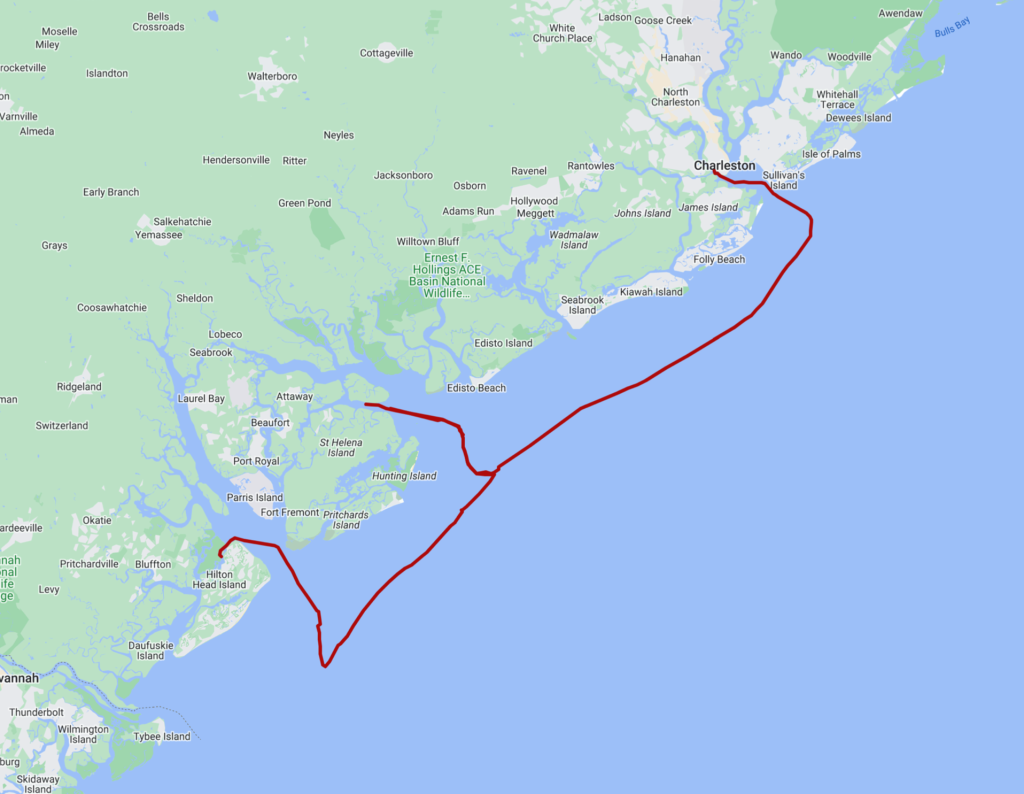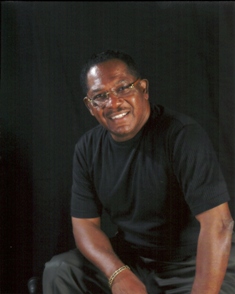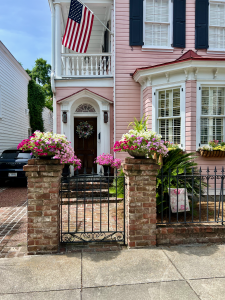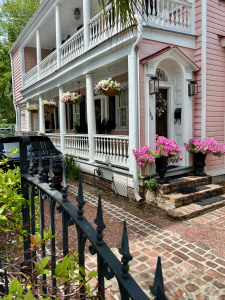
After several pleasant days in Hilton Head, we continued north, anchoring for the night below Morgan Island, South Carolina. This Island is also known as Monkey Island because of a population of retired research monkeys that were released there. We didn’t see any, but we heard them.
After a starry night at anchor, we left at first light to make our way to the city of Charleston.
Many boaters going up or down the east coast take the Intracoastal Waterway. This is an inland waterway that parallels much of the east coast of the United States. With Fregata’s 73 foot mast and 7 foot draft, this is not an option as there are many fixed bridges offering no more than 65 feet of clearance as well as shifting shoals under water.
There are inlets from the ocean to protected waters along the way, enabling stops for the night, although there are stretches of coast that require several days of sailing with no inlets deep enough to accomodate sailboats.
Departures are timed according to various criteria, such as:
- Leaving on an ebbing tide to get a push from the current
- Entering and exiting shallow inlets on a rising tide to make sure that if we hit bottom (there are shifting sandbars just outside many of the inlets), we have some flood tide left to lift us off
- Arriving at slack tide to facilitate docking because marinas are often on rivers with strong currents.
- It is known as the holy city because of the number of churches of different denominations.
- It was the primary port in the days of slavery, through which 40% of saves brought to N. America passed.
- It retains ties to the Gullah Geechee culture and language
Can you speak Gullah?
Gullah is a language historically spoken by slaves on the low country islands of Georgia and South Carolina, based on a mix of African, Caribbean and English. Listen to Alphonso Brown, local historian, musician, lecturer and tour guide, who shared this commentary with us.
 ,
,
Photo Copyright © 2024 | Gullah Tourshos
Where I come from...
The Alan Jackson song goes, “where I come from, there’s a lot of front porch sittin’.” A peculiarity of single family homes in Charleston is that the porch is on the side of the house in order to take advantage of shade and breezes. The door that appears to be the front door, opens onto the porch and the main entrance to the house is on the side. Read more about this parculiarity here.


8 Responses
Wonderful post! Charleston is on my bucket list. Safe sailing to you both
You’d enjoy it, Shep. Has a European feel blended with Southern charm.
Wonderful to see your blog posts again! Well written and full of fascinating information not always easily available. Again sounds like a helluva great voyage full of beautiful photos, thoughts and useful information. Thanks to both of you for creating and keeping up a marvelous family tradition, (of which I’m envious). Who ever thought, when you were learning the rudiments of sailing on the Cooper River of New Jersey on our Duster class boat, that the interest would be loved, the sailing maintained and increased over the years, to the pleasure of all those you’ve allowed to participate with you through your blogs! It was a pleasure for me to have been a small part of sharing my love of sailing with you.
Happy sailing and keep up the good work.
Love, Dad
Yes, Dad, it all started on the Cooper River in a Duster, one of which we found in Halifax, NS last year. I’m grateful to have had that experience. Glad to have you virtually on board. Love, D&S
Another old tradition about those porch doors was that when the door was left open the family was ready for visitors to stop and chat for a bit. How very rare that someone just happens by these days to say hello. You sure did stop by and learned plenty about this city.
Hi Cathy, Good to know. Fortunately, we didn’t barge in on any of those closed porches :-). Have you lived in Charleston? Great city.
Nice photos and very interesting side notes on Gullah and the disposition of the fake front door and the porch!
BTW, there is a typo in the label of the image “Charlseston street views”.
Tu nous manquais ! Corrigé, merci.